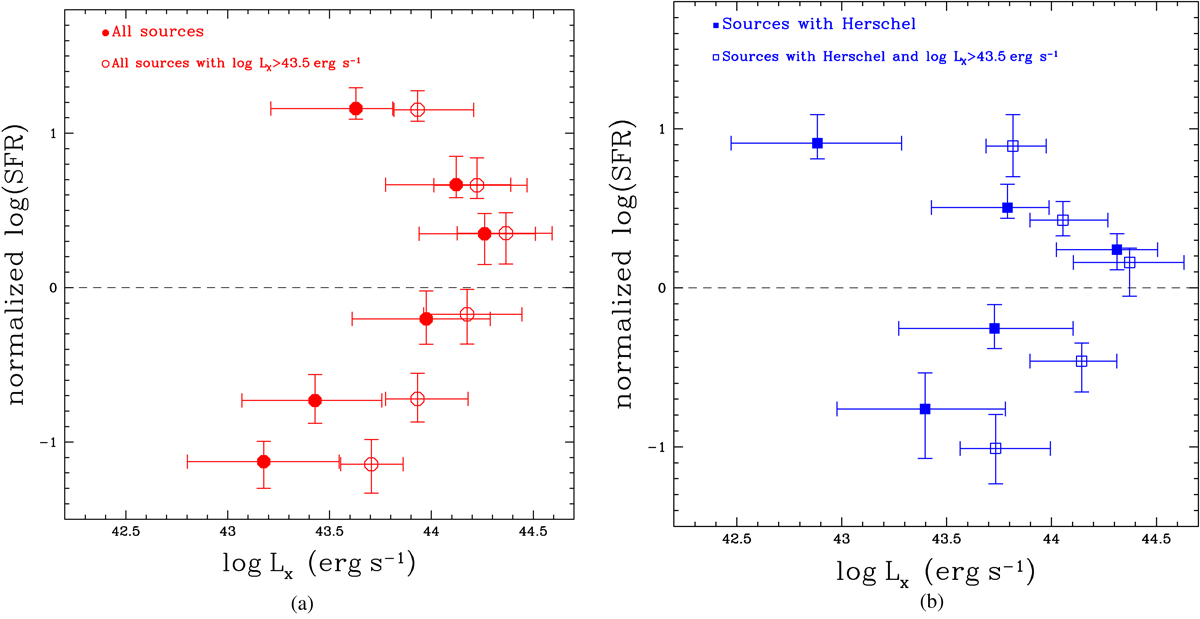Fig. 8.

Binned results of the normalised SFR as a function of the median AGN X-ray luminosity, in bins of normalized SFR. Left panel: filled circles present the measurements for the 3336 sources. Open squares show our estimates when we restrict our sample to those X-ray AGN with log LX(2 − 10 keV) > 43.5 erg s−1 to account for the LX-z incompleteness of our dataset (see Fig. 2 and text for more details). Right panel: our results for the 608/3336 AGN with available Herschel photometry (filled squares). Open squares show our measurements for the 381 sources with Herschel photometry and log LX(2 − 10 keV) > 43.5 erg s−1. In both panels the dashed line corresponds to AGN in the main sequence. Above this line, AGN have an enhanced SFR compared to star formation main-sequence galaxies of the same stellar mass and redshift. Below the dashed line, AGN have an SFR that is suppressed compared to main-sequence galaxies of the same mass and redshift. Based on our results, the AGN enhances the star formation of its host galaxy when the latter lies below the main sequence (below the dashed line) and quenches the star formation of the galaxy it lives in when the host lies above the main sequence (above the dashed line).
Current usage metrics show cumulative count of Article Views (full-text article views including HTML views, PDF and ePub downloads, according to the available data) and Abstracts Views on Vision4Press platform.
Data correspond to usage on the plateform after 2015. The current usage metrics is available 48-96 hours after online publication and is updated daily on week days.
Initial download of the metrics may take a while.


